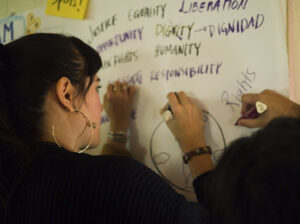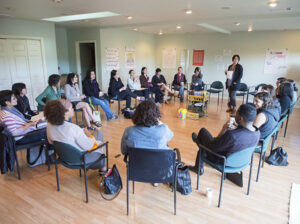Toolkits
Social Movement Theories
Social movements are defined by cycles of contention, which are cycles of tension that can span decades and ebb and flow with movement and countermovement wins. Social movement theory outlines four components of social movements: political opportunity, social networks, cultural frames and narratives, and repertoires of contention. Within repertoires of contention there are three categories: constrained, violent, and disruptive.
What This Means for Social Justice Activists & Designers

Social Justice Activists
While social justice folks are adept at creating some components of social movements, such as social networks and cultural frames and narratives, they have had less success generating continually disruptive and innovative ideas. Being able to understand and define social movements through different theories provides space to expand your thinking when defining the problem you want to solve and generating ideas to solve it.

Designers
When teaching, this curriculum is the beginning of the flaring out process for students. Beginning with social movement theory allows students to expand their thinking about social movements early in the design process. This allows students to understand the different approaches and components of social movements, and how they have been successful and unsuccessful. Ultimately, students can use this understanding to inform their own ideas about innovative social change strategies.
Title Here
Name Here Company Here
Description text here
Quote goes here